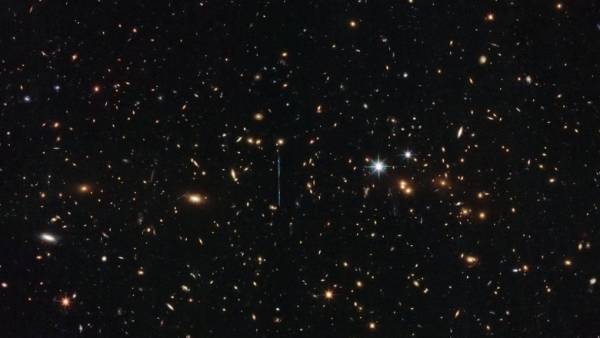Hubble weighed the heaviest cluster of galaxies the Universe
MOSCOW, 17 Dec — RIA Novosti. Space Observatory the Hubble space telescope measured the mass of one of the largest and most large clusters of galaxies in the visible Universe, ACT-CLJ0102−4915 in the constellation of the Phoenix — it was three quadrillion times bigger than the Sun, according to NASA.

A large part of the galaxies in the Universe around us, including the milky Way itself is part of the larger clumps of matter, clusters and galaxies superscaling. Many of them, as shown by recent observations that extend for millions and tens of millions of light-years, and have a lot of tens to hundreds of trillions of solar masses.
Scientists are actively studying a similar group of galaxies, because their study, like today I hope the cosmologists, will help us to understand the role in their education and life is played by dark matter and dark energy, and how their structure and distribution in the Universe associated with the distributed matter in the universe in the first moments after the Big Bang.
The biggest object of this kind, as shown by recent observations of Hubble, is the galaxy cluster ACT-CLJ0102−4915 in the constellation Phoenix, at a distance from us of about 7 billion light-years.
It was opened in 2011 during the joint observations, which led telescope Chandra, ALMA and VLT. Scientists originally assumed that we are dealing with the most large and heavy cluster of galaxies, but the exact mass of the “fat man” as it began to be called astronomers, have been measured relatively recently, when the observations connected “Hubble”.
The images obtained by cameras space Observatory have helped scientists to understand that the mass of ACT-CLJ0102−4915 more than three quadrillion Suns, and discover that it consists of two major parts colliding at a speed of several million miles per hour. As the researchers suggest, one of them in the near future “shoot” the second part “fat man” and leave its limits, becoming a “satellite” ACT-CLJ0102−4915.